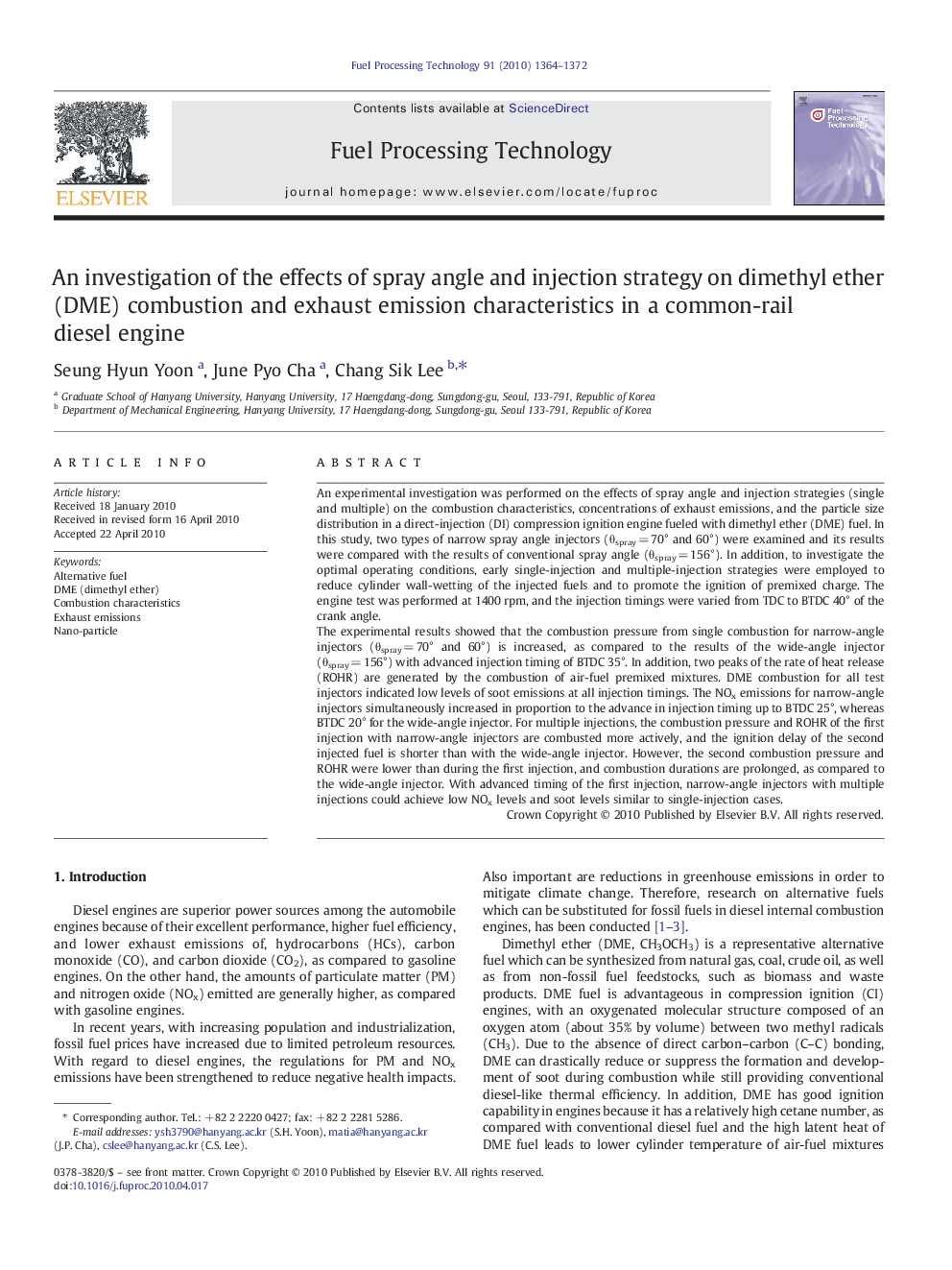| کد مقاله | کد نشریه | سال انتشار | مقاله انگلیسی | نسخه تمام متن |
|---|---|---|---|---|
| 210617 | 461719 | 2010 | 9 صفحه PDF | دانلود رایگان |

An experimental investigation was performed on the effects of spray angle and injection strategies (single and multiple) on the combustion characteristics, concentrations of exhaust emissions, and the particle size distribution in a direct-injection (DI) compression ignition engine fueled with dimethyl ether (DME) fuel. In this study, two types of narrow spray angle injectors (θspray = 70° and 60°) were examined and its results were compared with the results of conventional spray angle (θspray = 156°). In addition, to investigate the optimal operating conditions, early single-injection and multiple-injection strategies were employed to reduce cylinder wall-wetting of the injected fuels and to promote the ignition of premixed charge. The engine test was performed at 1400 rpm, and the injection timings were varied from TDC to BTDC 40° of the crank angle.The experimental results showed that the combustion pressure from single combustion for narrow-angle injectors (θspray = 70° and 60°) is increased, as compared to the results of the wide-angle injector (θspray = 156°) with advanced injection timing of BTDC 35°. In addition, two peaks of the rate of heat release (ROHR) are generated by the combustion of air-fuel premixed mixtures. DME combustion for all test injectors indicated low levels of soot emissions at all injection timings. The NOx emissions for narrow-angle injectors simultaneously increased in proportion to the advance in injection timing up to BTDC 25°, whereas BTDC 20° for the wide-angle injector. For multiple injections, the combustion pressure and ROHR of the first injection with narrow-angle injectors are combusted more actively, and the ignition delay of the second injected fuel is shorter than with the wide-angle injector. However, the second combustion pressure and ROHR were lower than during the first injection, and combustion durations are prolonged, as compared to the wide-angle injector. With advanced timing of the first injection, narrow-angle injectors with multiple injections could achieve low NOx levels and soot levels similar to single-injection cases.
Journal: Fuel Processing Technology - Volume 91, Issue 11, November 2010, Pages 1364–1372